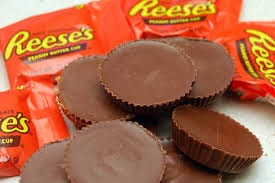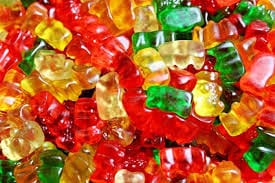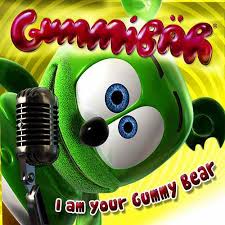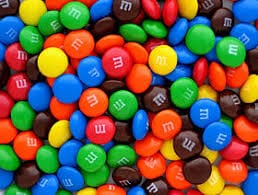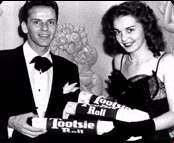Thank you for coming along with me on this journey through time, exploring the history of our favorite candies. Hope to hear from everyone soon!
Category Archives: Uncategorized
I Love Candy (Canes)
The candy cane first originated in Germany around 250 years ago. As the story goes, in 1670 a choirmaster at the Cologne Cathedral was concerned that his children would not be able to sit quietly throughout an entire Christmas nativity service. He decided that food would be the best solution.
To remind them of Christmas, the choirmaster made the candies in the shape of a shepherd’s crook, because baby Jesus was visited by shepherds on the very first Christmas. Nowadays, experts argue that the story has no evidence and is completely untrue. However, this is still the most popular tale.
The parent to candy canes are sugar sticks, which are basically the same as a candy cane except there is no curve and the candy is pure white. Hundreds of years later, around 1900, the candies were given a peppermint flavor and red stripes were added.
The National Confectioners Association reports that candy canes are the best selling non-chocolate candy during the month of December. 1.76 billion candy canes are produced in the United States annually and 90% of candy canes are sold between the holidays of Thanksgiving and Christmas. The week that candy canes are flying of the shelves the most is the second week of December, probably because that is the week that most people decorate their trees.
Christians have added new meanings to the candy cane as well. The white is said to represent the purity of Jesus Christ, and the red is said to represent His blood shed on the cross. The flavor of the peppermint may represent the hyssop plant used for purifying the Bible. The shape of the candy cane is also a “J” for Jesus. Another symbol seen through the candy cane is that when it is broken, we are reminded that Jesus’s body was broken for us.
Taste the Rainbow with Skittles
Skittles were first created in the United Kingdom around 1974. It is believed that an unknown British company was the first manufacturer of this popular candy. Skittles’ popularity sailed across the sea to the United States in 1979. After three years of sales in the United States, Skittles began to be manufactured here in America as well.
In 1994, the slogan “Taste the Rainbow” was introduced and became one of the longest running advertising campaigns in history. The entire theme of the Skittles company was created by D’Arcy Masius Benton & Bowles, a New York advertising agency.
Today, Skittles are loved in over 65 countries. In the United States, Skittles are the second most popular candy. They are the most popular among all children in North America.
The 21st century brought along some changes for the Skittles company. In 2000, Sour Skittles were first introduced. Skittles Bubble Gum was created in 2004, and the first limited edition Skittles, which were X-treme Fruit, were made in 2006. The original flavors of grape, orange, lemon, lime and strawberry are still available, but there are newer varieties such as Wild Berry, Smoothie, and Tropical, which are available today.
In 2009, Skittles decided to add to their appeal by becoming vegan. Instead of regular gelatin made from the cartilage of animals such as cows and pigs, the company decided to make Skittles with a gelatin made from no animal products.
One note that has always been discussed is the similarity between Skittles and M&M’s. On the outside, they look almost identical except for the difference of a faint white letter printed on the side of each. But on the inside, the candies are worlds apart. Skittles have a delicious fruity flavor in the middle, unlike M&M’s which have a chocolate filling.
Fun Fact: American football player Marshawn Lynch became a spokesman for Skittles after he claimed that the candy helped him develop his athletic abilities.
Candy Corn- The Iconic Halloween Treat
In the 1880’s, candy companies were trying to create candies with an agricultural theme, due to the fact that half of the labor force was made up of farmers. Candy corn is a innovation of the three colors used for pumpkin, turnip, and chestnut candies.
Employee of Wunderle Candy Company, George Renninger, in Philadelphia was said to be inventor of candy corn. According to the National Confectioners Association, Wunderle was the first company to sell these treats. However the Jelly Belly Candy Company, then the Goelitz Candy Company, was the one who popularized Candy Corn, which they called “Chicken Feed.” This is because before WWI, Americans thought of corn as food for chickens not people.
In the beginning of the 20th century, children loved to buy candy corn as “penny candy” because they could buy these treats in bulk for cheap. Candy corn didn’t become solely associated with Halloween until the 1950’s, when there was a dramatic spike in October advertising. At the time, it cost just 25 cents per pound.
Candy Corn is actually one of the healthiest- or least unhealthy- Halloween candies available. This fat free candy is only 140 calories per handful with just 28 grams of sugar. Another plus is that the candy lasts a very long time. Unopened, candy corn will last nine months. If opened, it will last up to six months.
Candy Corn is made from a mixture of sugar, corn syrup, fondant, vanilla, and marshmallow crème. All these ingredients are then melted into a liquid, colored, and molded. The final product is actually polished with an edible wax, creating an irresistible shine.
Candy corn is made in all different colors throughout the year.
- During Thanksgiving, candy corn is known as Indian corn. The colors are brown, orange, and white.
- At Christmastime, the candy comes in green, white, and red.
- Valentine’s Day’s Cupid Corn is pink, red, and white.
- The Bunny Corn of Easter comes in a variety of pastel colors.
According to the National Confectioners Association, over 17,000 tons, or 35 million pounds, or 9 billion pieces of candy corn are produced every year. This fact may come as a surprise given that only 50% of consumers actually enjoy the taste of candy corn!
Fun Fact: National Candy Corn Day is October 30.
Peanut Butter Cups By Reese
In 1919, Harry Burnett Reese, former dairy employee of the Hershey Company, was so inspired by the Milton Hershey and the need to provide for his wife and children that he decided to create his own candy company. The H.B. Reese Candy Company made different candies with ingredients such as coconut, caramel, and molasses, but in the mid 1920’s a special candy made from local Hershey chocolate and specially processed peanut butter was born. Simply known as peanut butter cups back then, as its popularity grew, it became known as the famous Reese’s Peanut Butter Cups. During World War II, sugar became rationed and Reese decided to only produce one candy. He chose the one with least amount of sugar which was, you guessed it, the peanut butter cup!
In 1963, the Hershey Chocolate Company bought the H.B. Reese Candy Company for $23.5 million after Reese passed away. In 1969 Reese’s became the best seller for the Hershey Company, selling over 300 million cups each year. In 1978, Hershey’s created the iconic Reese’s Pieces, which were featured in the famous movie E. T. the Extraterrestrial. After the movie became a hit, Reese’s Pieces sales increased by 60 percent.
Some researchers estimate that Reese’s Peanut Butter Cups are the most popular Halloween candy. Throughout the whole year, Hershey sells over $500 million worth of Reese’s. The cups can be used as a delicious treat themselves, or baked into other treats and desserts. There are a great number of cookbooks online describing the many ways to incorporate the candies into other desserts, such as cheesecakes, brownies, cookies, doughnuts, etc.
Reese’s Peanut Butter Cups are certainly a favorite among my friends. Whenever we would go trick or treating in the past, I remember we would always fight for the Reese’s Peanut Butter Cups. They always have and always will be simply delicious!
Fun Fact: Peanut Butter was first introduced in 1904 at the Universal Exposition in St. Louis.
The Bear Shaped Gummies
Producing over 80 million bears every day, Haribo keeps their exact recipe and production method as a closely guarded secret. Many have tried to find out, but few ever have!
In 1920, Hans Riegel, a poor confectionary worker living in Bonn, Germany, decided to quit his job and make hard candies in his own kitchen. His wife would distribute the candies on her bicycle to consumers. Thus, the Haribo company was created. Two years later, Riegel decided to make gummy candies, which were becoming more popular. He chose to make the gummies bear shaped because he realized the company needed a gimmick to get people to buy his product over others. The new gummy bears became an instant hit with children living in Bonn.
The company expanded in the 1930’s, but was devasted in the 1940’s. In the beginning of World War II, the company had over 400 employees making over ten tons of candy each day. But then, Hans Riegel passed away, his sons became prisoners of war, and the company shrunk to only 30 employees. When the war ended, Riegel’s sons revived the company. By 1950, the company had over 1,000 employees and started building factories across Europe. The company entered the market of the U. S. in 1982.
The popularity of gummy candies exploded in the 1980’s. In 1985, Disney created a cartoon called The Adventures of Gummi Bears, which remained in production until 1991. Probably the most familiar animated gummy bear to our generation debuted in 2007. This lovable bear sang the song “I am a Gummy Bear,” which actually cracked a few singles charts. You can watch the music video here!
Although gummy bears have not been around for as long as other candies, their popularity is still off the charts. Gummy bears are a delicious treat that are definitely on the top of my list of favorite candies.
Fun Fact: In 1997, the tobacco executive and head of Phillip Morris Co., James Morgan, claimed that gummy bears are just as addictive as tobacco!
M (urrie)& M (ars)
“The milk chocolate melts in your mouth, not in your hand.”
M&M’s, named after Forrest E. Mars Sr., founder of the Newark Company, and Bruce Murrie, son of Hershey Chocolate’s president William F. R. Murrie, was created in 1941, by Mars Incorporated during the second world war. But the M&M’s of that time were not stamped with the famous M on the front until 1950. At that time, a bag of candy only cost 5 cents. Peanut M&M’s were produced in 1954. That same year, the animated M&M’s characters were all know and love were introduced along with the slogan, “melts in your mouth, not in your hands.” In the 1960’s M&M’s became available in red, yellow, and green. Nowadays, M&M’s are available in every color imaginable for any occasion.
It is common for people to order the candies for their special events. I remember at my brother’s wedding, he and his then fiancé ordered custom M&M’s. The candies were personalized and had their names and wedding date written on half and the other half had a picture of wedding bells. The M&M’s were white and a pale pink color.
There are different varieties of M&M’s in production today. These include Peanut M&M’s, dark chocolate, almond, and peanut butter. The mini version of the classic chocolate style was debuted in 1996.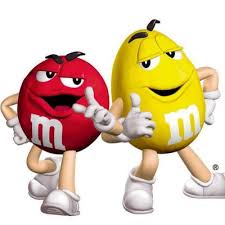
The famous animated M&M characters have become a hit with consumers. Red and Yellow are and always have been the most popular characters and appear in a great number of commercials together, including ones for Christmas and Halloween. The first female character, Green, was introduced in 1997. Two years later, Orange was introduced as the paranoid crispy M&M.
In 2017, M&M’s was the top ranked chocolate candy in the United States with $688.7 million dollars worth of sales, and over 400 million are produced every single day. This top selling candy just goes to show that everyone loves a classic!
Licorice- A Repulsive Delectable Treat
Did you know that taste of licorice is so distinctive that its taste is detectable when diluted to one part licorice and twenty thousand parts water?
This yummy candy has been around since the ancient times. The Ancient Egyptians put licorice in the tombs of loved ones. The Ancient Chinese believed that eating licorice root gave them strength and endurance. Everyone from Caesar, to Alexander the Great, to the Scythian Armies used licorice for its healing properties and its ability to quench soldiers’ thirst. Licorice has also been used for medicinal purposes. The licorice root has been used as a cough suppressant, treatment to infection, ulcers, eczema, and throat irritation for over 3000 years!
Licorice was first grown in Europe at an English monastery in Pontefract. From there, word spread to America and then to the rest of the world, and it has been a favorite ever since! The reason the licorice root is so appealing is because of the aromatic compound Anethole. Anethole can be found in other foods such as fennel, anise, and other herbs. The sweet taste is from the compound Glycyrrhizin, which is fifty times sweeter than sugar. This combination of compounds makes the licorice flavoring that can be found in a multitude of products. It is found in varieties of candy, soft drinks, herbal teas, and even in some medicines to mask an unpleasant taste.
Today, licorice candies can be made in two ways. The first is to pour hot liquid licorice into a cornstarch mold and let cool. The second is to bring the hot liquid licorice, along with other colors and flavors, to a point where it is boiled so much the mixture turns into a dough like consistency. From there, it is stretched and extruded by formers that will give it a unique shape, such as a rope.
There is quite a bit of controversy over the taste of black licorice. It is one of those things that people either love or hate. The haters say that it has chemical smell similar to that of artificial sweeteners, but the lovers just go crazy for that distinct taste.
Fun Fact: National Licorice Day is April 12!
Snickers the Candy (Not the Horse)
Snickers is the most popular candy bar in the whole world and there’s no surprise why. The delicious treat is jam packed with delicious roasted peanuts, sweet gooey caramel, and a crispy nougat, all coated with sweet, decadent milk chocolate.
Snickers was created in 1930 by a man named Frank Mars, who decided to name his candy bar after his horse. However, in the United Kingdom, they would call Snickers bars a Marathon Bar. Just recently did the name become unified throughout the world. The name of Frank Mars’ family farm in Tennessee, ironically, was named Milky Way. When Snickers was first released, 83 years ago, there was quite a bit of controversy surrounding its price. At a time when candy bars cost 5 cents, the Snickers bar was sold for a whopping 20 cents. The candy continued to increase in popularity, and in 1984, Snickers was the official snack sponsor for the Olympic Games, which took place in Los Angeles, California. In 1991, during the first Gulf War, a frozen Snickers bar was sent to every U. S. soldier as a Thanksgiving present.
When I was younger, none of my friends talked about Snickers and it just blended in with other chocolate candies. But ever since their, “You’re not you when you’re hungry campaign,” Snickers seems to be the only chocolate candy people talk about. Whenever I am at football games or special events, the candy I notice everyone buying by far is Snickers. Without fail, Snickers commercials always make me laugh and seem to be the most memorable.
Today, this best selling candy bar brings in over $2 billion annually. Its continued success is attributed not only to its delicious flavors, but the stellar marketing campaigns. For example, the most recent campaign, “You’re not you when you’re hungry,” has increased sales by 15.9%. Markets also grew for the billion dollar brand in 56 of their 58 market shares.
Did you ever wonder just how many peanuts are in each Snickers? With 16 peanuts in each chocolate bar, over 100 tons of peanuts are used in the production of 15 million Snickers bars each day. Now, that’s Nuts!
Sources:
https://www.thedailymeal.com/cook/10-things-you-didnt-know-about-snickers/slide-8
https://www.candyfavorites.com/blog/candy-history-snickers/
Tootsie(‘s On A) Roll!
“How many licks does it take to get to the Tootsie Roll center of a Tootsie Pop?”
This classic advertisement from the 1970’s shows a variation of our vintage candy for this week- Tootsie Rolls! 64,000,000 Tootsie Rolls are made every day, over 44,440 each minute, and approximately 740 a second.
This 122 year old candy was created by Leo Hirschfield, an Austrian immigrant, in Brooklyn. Hirschfield named his new candy after his daughter, Clara, whose nickname was Tootsie. The Tootsie Rolls began to be delivered by horse and buggy to a great number households in 1905. Tootsie Pops were created in 1931 and, still, 87 years later no one knows how many licks it takes to get to the center. They come in flavors such as orange, cherry, grape, and raspberry. In 1942, Frank Sinatra wowed our grandparents in a Tootsie Roll advertisement. People say that it was his favorite candy and he is rumored that he was buried with them.
Tootsie Rolls became an alternative to the classic chocolate known and loved by everyone, which would melt at temperatures starting at 85 degrees. This is why Tootsie Rolls became popular in the military. These classic sweets can withstand almost every environment on Earth, so soldiers would bring them as a part of their field rations to boost their morale.
Today, Tootsie Roll Industries has expanded and sells a great variety of candies, including Junior Mints, DOTS, Sugar Babies, Charleston Chews, and Double Bubble. But sadly, sales are not what they used to be for this iconic candy- so let’s go out and get a taste of the candy our great- grandparents ate before it’s too late!
Tootsie Roll Industries has their own social media pages! Feel free to follow, tweet, and like their pages @TootsieRollIndustries (Facebook), @TootsieRoll (Twitter), and @tootsieroll (Instagram)!
Sources:
http://tootsie.com/interactive-timeline/
http://mentalfloss.com/article/68805/12-sweet-and-chewy-facts-about-tootsie-rolls




